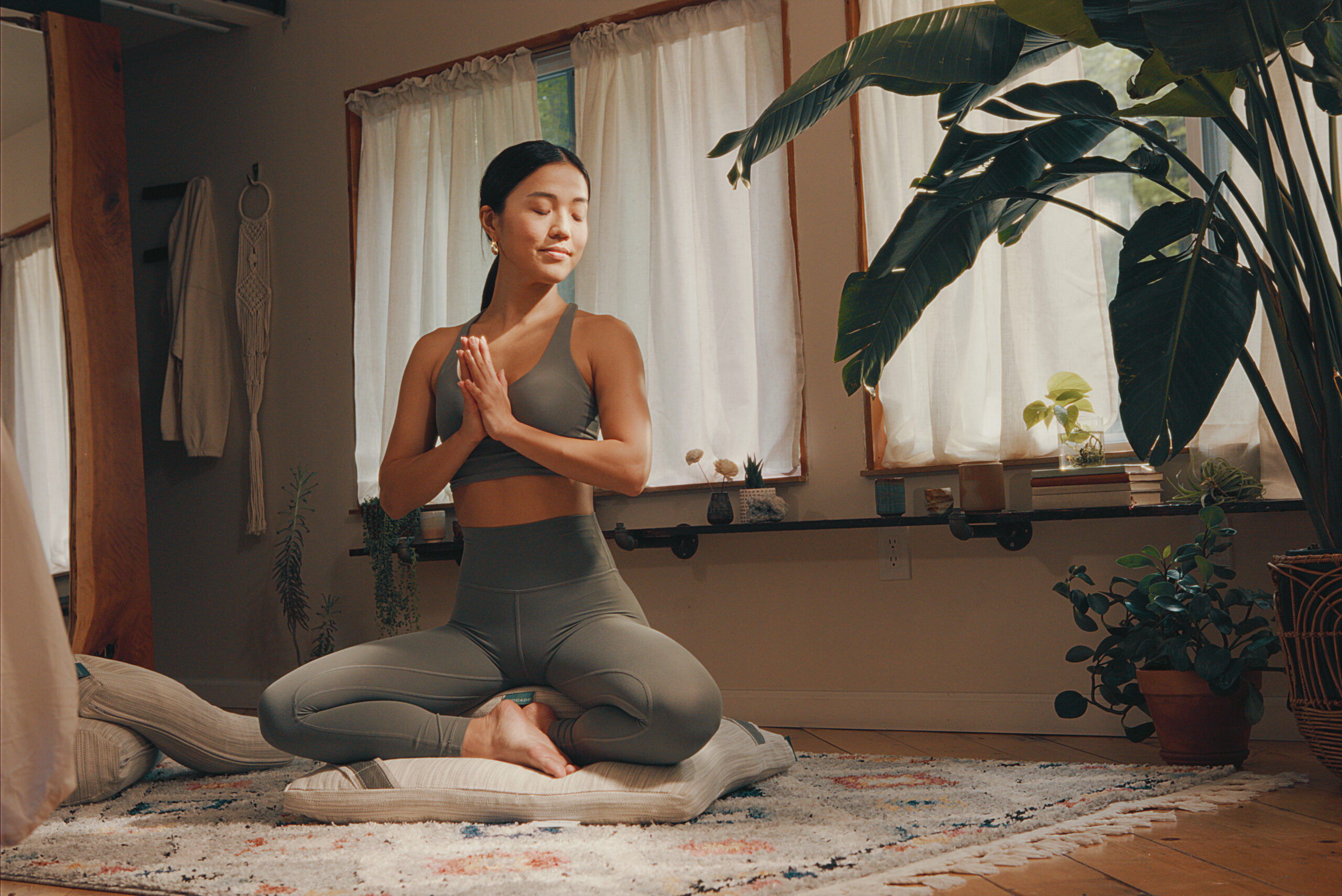Overwhelmed or distressed? Steady your thoughts and body with these quick grounding exercises.
You’re folding piles of still-warm laundry. Your phone buzzes with another text. Dinner is half-planned in your head, and your to-do list is spilling into tomorrow (again). But the weight in your chest isn’t just from the tasks piling on you. A comment from earlier in the day is echoing in your head. Your worries are birthing new ones, and you can’t seem to catch a break.
When your thoughts keep multiplying like this — sometimes triggering intense emotions and memories — the heavier they feel, making it harder to relax during the day, and even harder to fall asleep at night. Grounding, a self-soothing mindfulness practice, can help you pause, focus on the present moment, and regain emotional and physical stability when you’re stressed, anxious, or depressed.
While we don’t recommend burying difficult emotions forever, grounding can give you temporary relief so you’re not living in a constant state of unease. This form of self-regulation can also help you defuse tense situations before you react in a way you might regret. Learning grounding techniques before negative feelings bubble up is just as valuable as using them in the moment — it’s a preventative habit, so you already have tools ready to comfort yourself before things escalate. For example, when:
- You just heard some bad news
- You’re having a stressful conversation
- You’re about to speak in public
- You’re in a tough parenting moment
- You just left an emotionally draining therapy session
- You’re overwhelmed and ruminating
- You’re having a panic attack or feel one coming on
- You feel restless or have sleep anxiety
There are three categories for grounding: mental, physical, and soothing. Here are some exercises you can practice anytime, anywhere.

Read more: Clear Space, Clear Mind: The Case for Visual Rest
Mental grounding techniques
Mental grounding redirects your attention toward something neutral or logical so your brain has less space to dwell on distressing thoughts.
Count to 10 or recite the alphabet
One of my favorite parts of meditation is counting my breaths — it quiets my mind. Slowly count to 10 or recite the alphabet in time with your breathing, and then repeat the sequence forward or backward for a minute or two. Allow your mind to focus on the numbers or letters, letting your other thoughts fall away.
Think of a peaceful place or activity
Where’s your happy place? What’s something you love doing that makes you feel calm? Maybe it’s sitting on your back porch with a chilled iced tea and a good book, hanging out at a friend’s house for movie night, hiking your favorite trail in perfect weather, baking cookies for your neighbors, or sleeping in a bed with fresh, ridiculously soft sheets. Close your eyes and picture it in your mind. Maybe take it one step further and make a plan to live out that experience soon. It’ll be something to look forward to.
Play the categories game
Pick two or three categories. For each, spend a minute naming as many items as you can think of. If you want more of a challenge, try going from A to Z or sticking with one letter of the alphabet for each category. Here are some categories you can play with:
- Animals
- Books
- Cars
- Cities
- Countries
- Famous People
- Fruits & Vegetables
- Movies
- People’s Names
- Sports Teams
- TV Shows
Visualize leaving painful feelings behind
I like to imagine myself balling up upsetting feelings, as if they are physical objects like paper, and locking them in a box that only I have the key to. Try that, or picture your negative thoughts and memories as a TV show you can switch off or change the channel from. You might also imagine turning a dial to lower the volume, or envision yourself walking, biking, or flying away. Focus on how it feels to put some distance between you and your feelings, and then return when you’re ready to face them.
Physical grounding techniques
Physical grounding draws your attention to what you can see, touch, hear, smell, and taste to improve your bodily awareness and anchor you in the present moment.
Play the 5-4-3-2-1 game
Use your five senses to focus on the objects of your surroundings. Take a moment to notice the colors, textures, and other small details that catch your eye.
- Name 5 things you can see
- Name 4 things you can touch
- Name 3 things you can hear
- Name 2 things you can smell
- Name 1 thing you can taste

Read more: Want a Good Night’s Sleep? Incorporate These Colors Into Your Bedroom
Move your body
Get out of your head and back into your body by going on a walk, stretching, or dancing to a song you love. Stay focused on how each movement feels, including how the floor or air feels against limbs, as you release stagnant energy.
Put your hands, feet, or body in water
Run water over your hands in a sink, take a shower or bath, or if you’re near a pool or natural body of water, dip your toes in or fully submerge yourself. Enjoy and concentrate on the sensation of the warm or cold water as it flows over your skin.
Try earthing
The saying, “Go touch grass,” has morphed into a common figurative phrase, sometimes used as an insult, to urge people to get offline and experience the real world. But being in nature and placing your bare feet on soil or grass — a form of grounding called “earthing” — can be therapeutic. While more research is needed, some studies suggest that connecting with Earth’s natural electric charges can reduce stress and improve your energy and sleep.
Soothing grounding techniques
Soothing grounding comforts you and regulates your emotions so you feel safe and more at ease.
Write a list of gratitude and words of affirmation
Take a moment to write down what you’re grateful for and positive affirmations to shift your mindset. Showing this kindness toward yourself will remind you of the good in your life and your strengths.
Snuggle a pet
Holding or cuddling a pet releases oxytocin, a feel-good hormone that increases positive emotions. The rhythmic motion of petting and the warmth of their body create a comforting presence that reminds you you’re not alone. If you don’t have a pet, you can still experience the benefits by volunteering at an animal shelter or visiting places like cat cafés or puppy yoga sessions for a taste of animal-assisted therapy.
Spend time with a favorite hobby
Engaging in a hobby you love adds joy and creativity to your day. Whether it’s reading, junk journaling, pottery, assembling a puzzle, or gardening, comforting activities can be a portal for a bit of escapism, taking your mind off what’s troubling you. Ease into a flow state and let yourself get lost in some playtime for a while.
Listen to music
Choose uplifting songs or familiar tunes that bring you comfort. Maybe you have a go-to playlist or movie soundtrack that centers you. Soft, slow-beat music can slow your heart rate, helping you relax. But if you want to dance it out to one of your favorite upbeat tracks, by all means, turn it up. What matters is lifting your mood and grounding yourself in the melodies.
Think of these grounding techniques like recipes — you’ll try a few, find your go-tos, and keep them handy for the moments you need them.

Read more: 6 Relaxing Screen-Free Activities to Try Before Bed
Have feedback on our story? Email [email protected] to let us know what you think!

Shop Pillows
The Essential Organic Pillow Collection
Gentle, breathable, non-toxic support.







